The invention of the tank car coincided with the discovery of oil in northwestern Pennsylvania in the 1860s. Oilmen quickly discovered that hauling oil to market in horse-drawn wagons or floating barrels down local streams wasn’t going to do the job as oil production ramped up. The oil industry needed to find a way to take advantage of the country’s growing railroad network.
In 1865, Pennsylvania oilman Amos Densmore designed the first tank car, which consisted of two
wood vats on a flatcar. A new company, American Car & Foundry, a conglomerate of 13 freight-car builders, manufactured the car. Today a replica of this pioneer tank car is on display in front of the ACF Industries tank car plant in Milton, Pa.
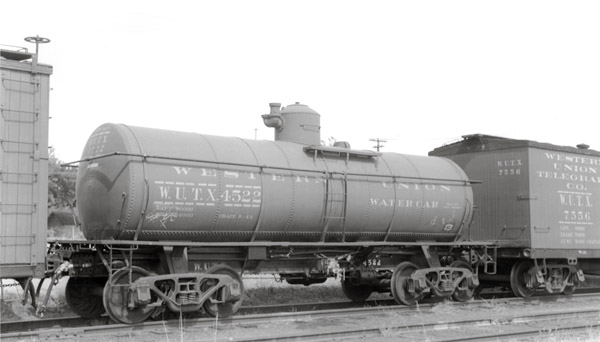
Car builders made the first iron and steel tanks by riveting together a series of overlapping cylinders. This method evolved into attaching two or more curved upper plates to a curved
bottom plate that ran the entire length of the car. The bottom plate produced a stronger tank and made tank car construction easier and cheaper.
Some tank cars were built of three or more longitudinal steel sheets riveted together.
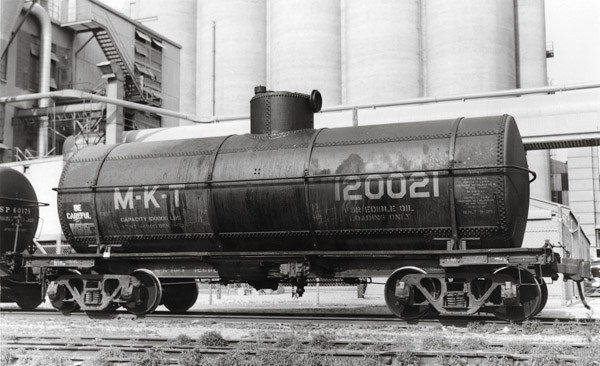
By the turn of the 20th century steel frames with the tank anchored at the midpoint of the center sill became common. The first “frameless” tank car appeared in 1901, although the design didn’t become widespread until the 1950s.
What started out as a specialized car for the oil industry evolved into a versatile piece of rolling stock. Tank cars still haul a wide range of commodities from corn syrup to hydrochloric
acid.





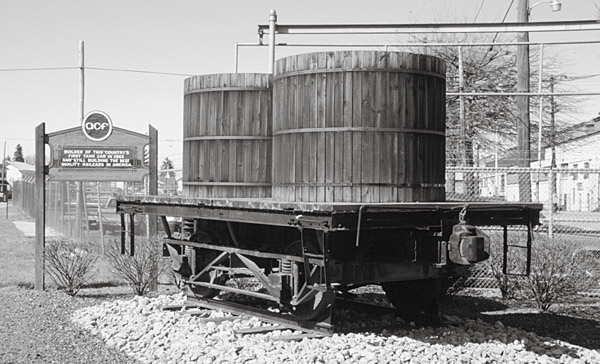

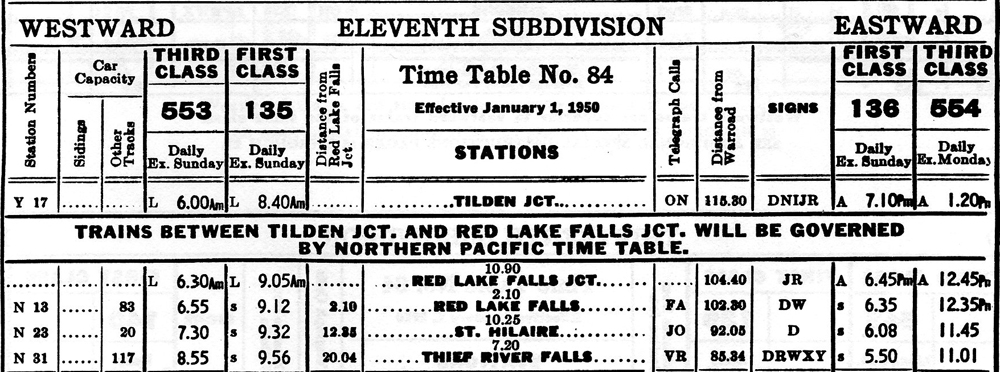
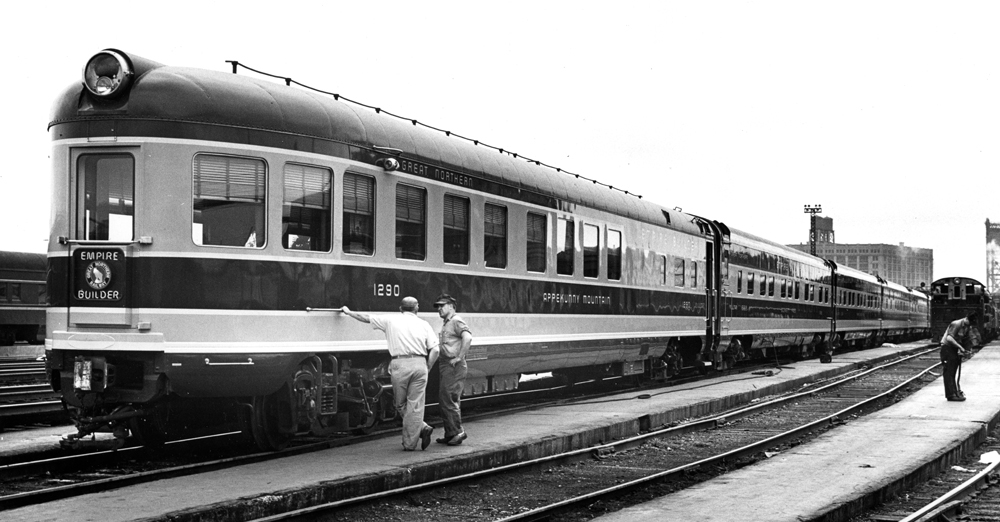
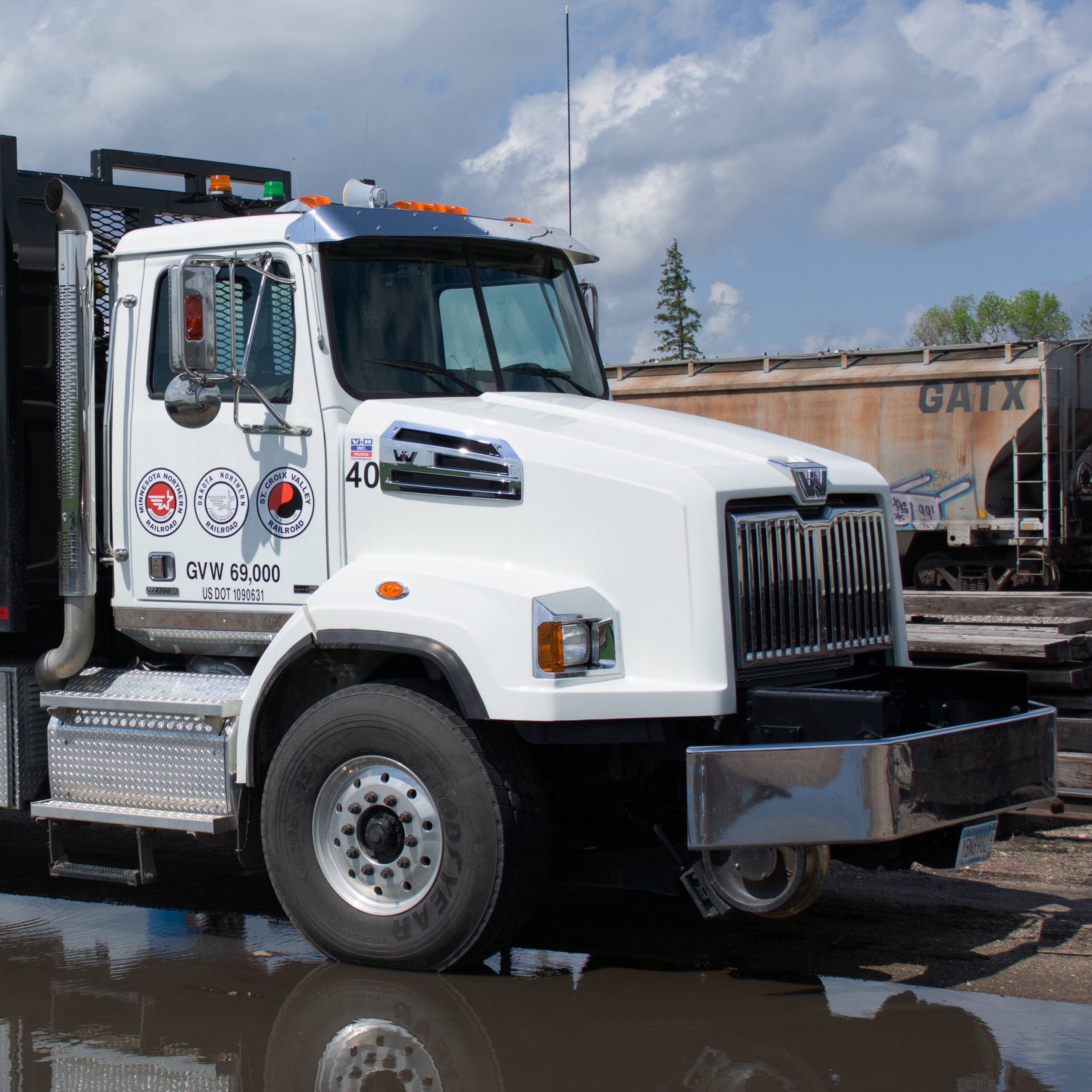
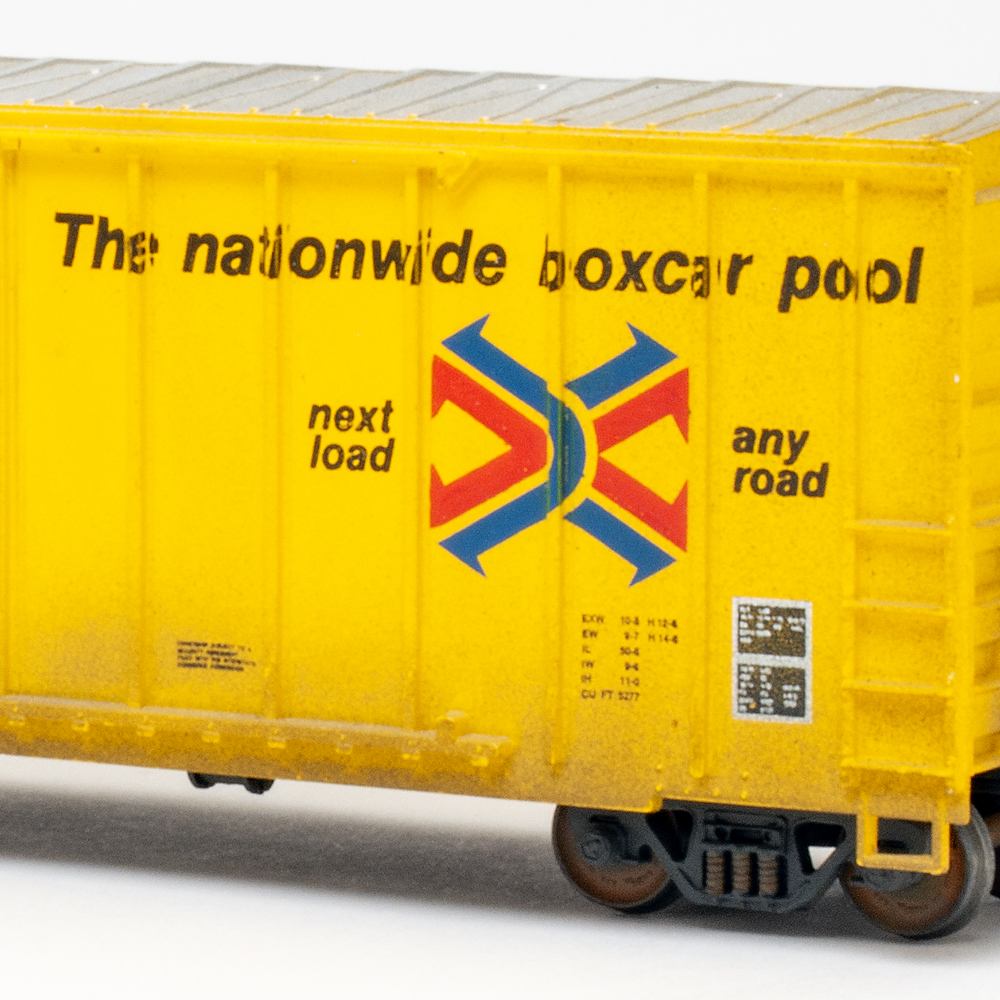




for Richard P New of Florida:
There is a three-view diagram of GATX 96500, the 60,000 gal four-truck tank car, with dimensions, in the "GATX Tank Car Manual, second edition" copyright General American Transportation Corporation, 1966. Library of Congress no. 66-21208. You will need pp 129 and 170 (for details of the side fills and drains). Although the diagram is not quite an MR drawing, thses diagrams were usually made to scale, and I had no qualms about scaling it for needed dimensions.
A model of this car was made by Quality Craft Models in the late 60's, but in researching this car, I concluded from on-line photos taken at the St. Louis RR Museum that the QC model had at least one major problem: the top line of the QC model is straight, but the top of the prototype car oval center section is higher than the cylindrical ends. Thus the car has a slight humpback as well as a whalebelly. Also, the QC car is only 108" dia./wide, but the GATX diagram states that the tank is 112.5" wide, and therefore the end cylinders must be 112.5" dia. I have developed plans that are suitable for modelmaking, which I will proceed with as time permits.
This car has been made in brass in HO. I never saw one in the flesh, and therefore I do not know how accurate it is.
Thanks to Richard Wehr for the heads up.
I am looking for a model or drawings of a vinegar wooden tank similar to the Speas Co. car shown in a Wikipedia file for the subject Tank Car.
I would like to know what tank cars were used in the pacific northwest during the 1930 and 1940s such as Sorthern Pacific,Northern Pacific,SPS, and others
To David Mitchell:
There was a model article for a three tub wooden Pickle Car in an old MRR.
I have lost my old copies so can't give you a date. Try late '50's or '60's
I am looking for articles on the extra-large tank car GATX 96500. Especially, plans and diagrams of this car. I know the car sits on display at the St. Louis Railroad Museum and I have pictures of it.
Any ideas where the plans/diagrams can be found?
Thanks.